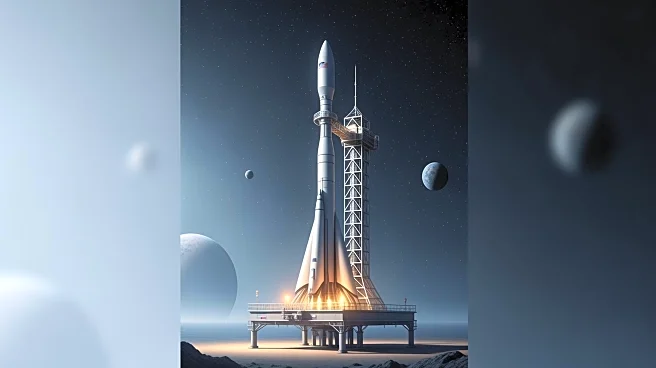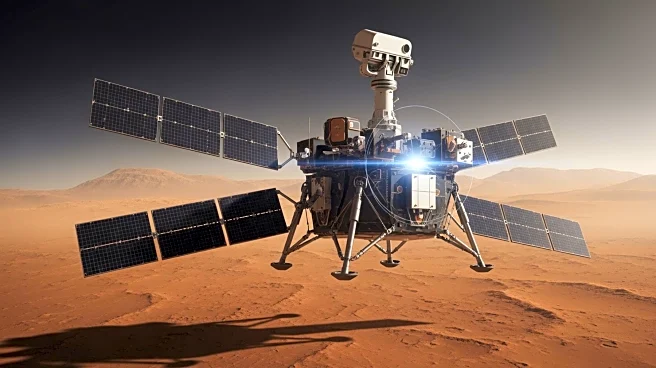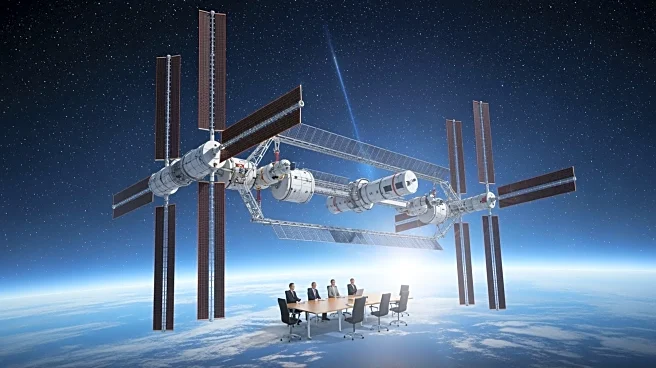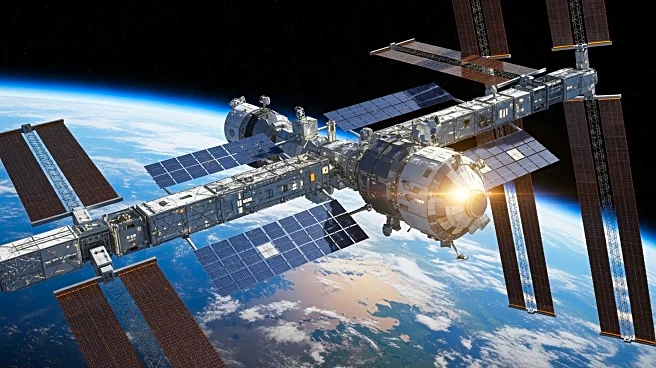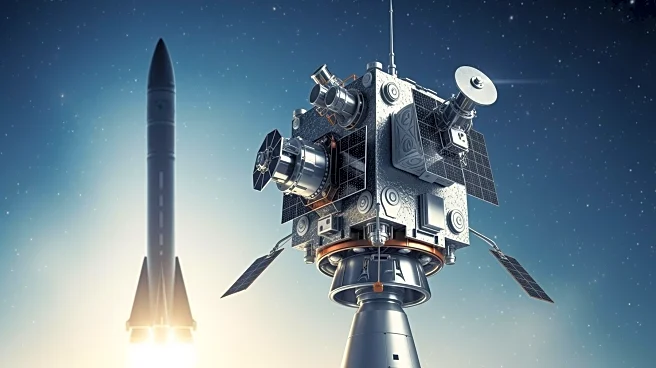What's Happening?
Blue Origin's New Glenn rocket is set for its second flight, launching NASA's ESCAPADE mission to Mars. Scheduled for November 9, the mission involves two identical small satellites designed to study the interaction
of solar wind with the Martian atmosphere. This launch marks New Glenn's first operational mission for a NASA science payload, following its debut earlier this year. Blue Origin aims to recover the reusable first stage of the rocket, enhancing its capabilities for future missions. The ESCAPADE mission will provide valuable insights into Mars' climate evolution, contributing to our understanding of atmospheric escape processes.
Why It's Important?
The successful launch of NASA's ESCAPADE mission aboard New Glenn represents a significant advancement in Mars exploration, offering new data on the planet's atmospheric dynamics. This mission could enhance our understanding of Mars' climate history, informing future exploration and potential colonization efforts. Blue Origin's attempt to recover the rocket's first stage underscores the growing emphasis on reusability in space technology, potentially reducing costs and increasing launch frequency. The mission also highlights the collaboration between NASA and private companies, driving innovation and expanding the scope of space exploration.
What's Next?
Following the ESCAPADE mission, Blue Origin plans to continue developing its reusable rocket technology, with future missions potentially including the Blue Moon Mk. 1 robotic lander. The success of the ESCAPADE mission could lead to further collaborations between NASA and private companies, accelerating advancements in space exploration. The data collected from Mars will contribute to ongoing research, potentially influencing future missions and strategies for exploring the planet. As Blue Origin refines its technology, the company may play a pivotal role in shaping the future of space travel and exploration.
